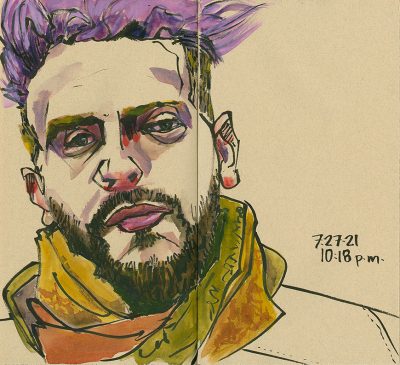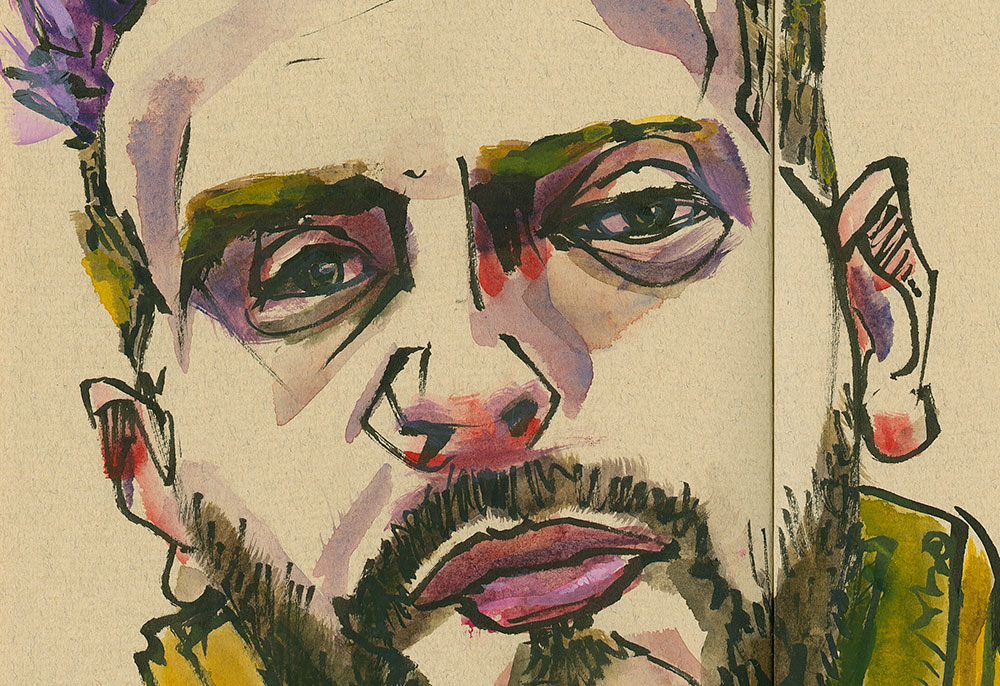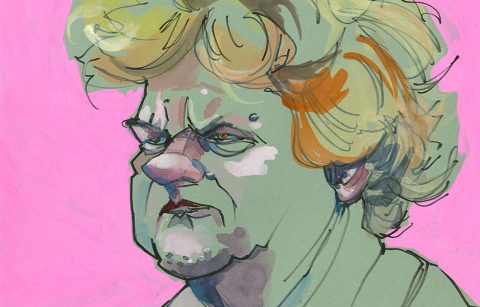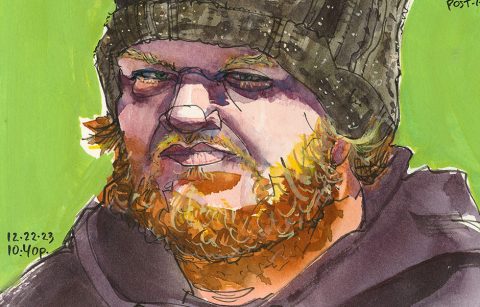
“So what pigments do you actually use Roz?”—it’s something I’m asked all the time.
I was asked again this Sunday during my Patreon Webinar. I had two travel palettes out on my desk, one with 26 pans, one with 27 pans. I was bemoaning the loss, through miss-packing of a storage box, of a third and most favored palette of 27 pans.
I write all the time about using a warm and cool of each primary—using a limited palette of only a few extra pigments.
Confronted with this display of pan-age people seemed confused.
“I only use a couple of these in a painting. And the reason I have so many reds, from here to here,” I said pointing out about 16 pans is because I paint a lot of chickens.
I went on to explain that I think you need to build your palette based on warm and cool primaries and colors you need for your main subject matter areas of interest.
But then I also always explain that you get to pick the warms and cools you use, that they are warm and cool based on what is next to them. It’s relationships.
I also explained that while most of the pigments in each of the two displayed palettes were the same. “I’m sure I don’t have more that 30 or 35 tubes of paint that I actually use at any time. There might be more around that I have tested for one reason or another, but I don’t use them.”
After the webinar a subscriber wrote in:
Roz, you mentioned in your palette discussion that you really only use about 9 or so paints from your palette. I do understand that it all starts w chickens … but what are YOUR core 9-10 watercolor pigments/paints?
In answering her question in the Facebook group I thought I’d take time to share it here on the blog, because it is a question I get asked all the time—and especially when there is a State Fair I’m always getting ready for it and fitting out a painting box, or even when there isn’t a Fair people look at my sketches and wonder the same thing.
So Here Are The Pigments I Really Use…
The following is still the line up in my kid’s palette (From Richardson, seen here) I have with me all the time Azo Yellow (MG), Gamboge (DS or MG), Phthalo Turquoise, Indanthrone Blue, Nap. Maroon, Quin. Pink, Perylene Red, Quin Sienna, Quin Gold, Buff Titanium, Titanium White, Calligraphy Gold Gouache (Schmincke)
The DS is Daniel Smith and the MG is M Graham. I don’t use MG much except in this palette. DS I tend to use in the studio, though I do have a 26 pan palette made from DS TUBE paints I sometimes use out and about. When out and about I mostly use one of my Schmincke palettes I fill with my selection of factory-made pans.
I gravitated away from the above kid’s palette selection to the one you see here from my 2019 palette, which is in storage.
Currently (well before it was mistakenly packed away) I replaced Quin Magenta on that palette with a return to Quin Pink.
Of the colors shown on the 2019 palette linked above I tend to use the following the most, all Schmincke unless otherwise noted):
Pure Yellow, Transparent green gold, Quin Pink (DS), Perylene Dark Red, Transparent Orange, Cobalt Azure Blue, Delft Blue (PB60), and Burnt Sienna. That round-up is essentially a warm and a cool of each primary and 2 oranges (TO and BS). BS and PB60 form my favorite complementary pair. CAB is just too much granulating fun. I use it all the time even when I really need to make different value range choices!
While those are the 8 pigments I use the most regularly for just about everything, I find Spinel Brown, Perylene Green, Phthalo Turquoise, and Perylene Maroon also useful from that 2019 palette. I can live without them, but they would be tier two favorites. (Sometimes I use them instead of items in the main eight and I toggle back and forth between Indanthrone Blue and Delft Blue which are both PB60.)
Because on any given day I might decide that I want a neutralized red or orange and need to use a different blue I have extra reds and blues on that 2019 palette. Or maybe I want to use a certain red/brown because it will give me a certain lavender (neutralized) when mixed with a certain blue. Those are things I like to play with in the moment depending on what subject I’m painting and how I want something to look.
So for instance if I decide that someone has a face I want to paint and I want it to have a warm undertone I’m likely to start with Saturn red. (Which isn’t even one of the main eight! That works for a lot of skin tones. Maybe it should be in my top eight?)
Then all my following color choices for that portrait are built upon that first choice and what I can do in relation to that first color or with that first color when mixing it with others. So I might only use 6 colors on that day, but none or only one of them might be from my regular colors (the 8 listed above).
For me that’s the fun of painting: having colors you know mix well with others and look good to your eye; which provide you with the complementary pairs you need to allow you to get the dark neutrals you may want for contrast; which give you the type of granulation you want, if any; and on any given day can create a lovely color family with only one or two other colors from the palette.
In color theory class I teach with a traditional palette of warm and cool primaries and a couple additional colors to ensure that everyone knows how to mix and interplay those pigments. Then with that information students have the foundational base to decide at the end of class, “Hey I need an orange” (which I don’t include in the original palette).
They know, because of all the work they have done with their pigments, which orange they will want to bring into their palette based on how that orange looks to their eye, meets their subject matter needs, and, most important, mixes with the other colors already on their palette.
It’s the teaching someone how to fish approach.
I do it this way because I want color to be as fun for everyone else as it is for me. I don’t want them using colors simply because they see me using a color, but because they see that color works well with all the other colors they are already using and love.






















